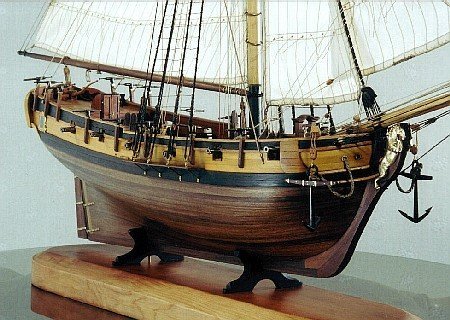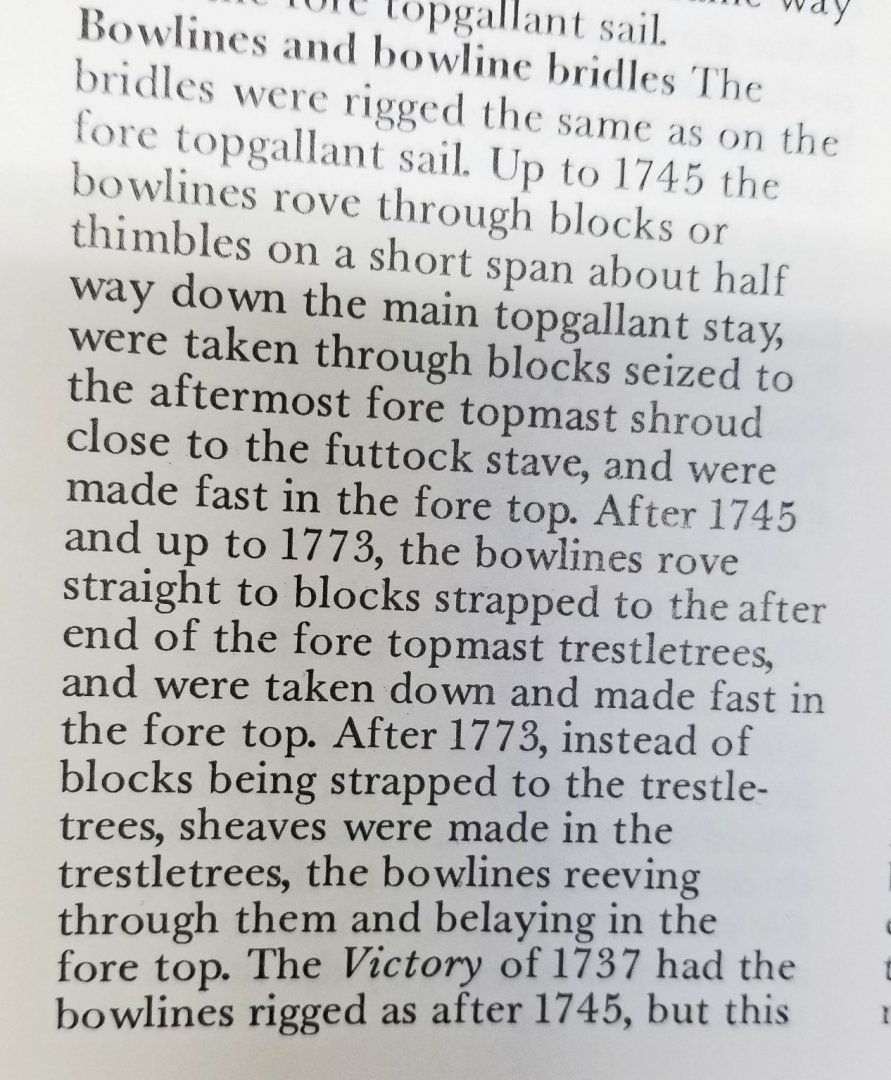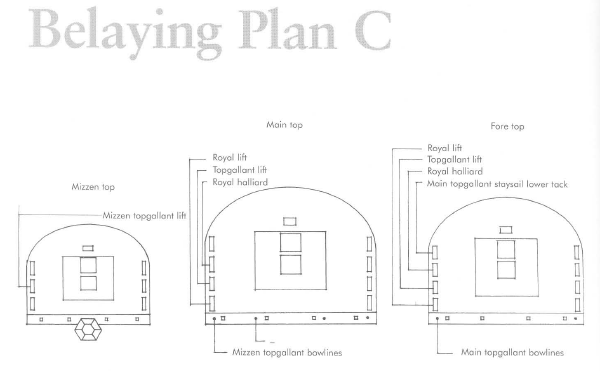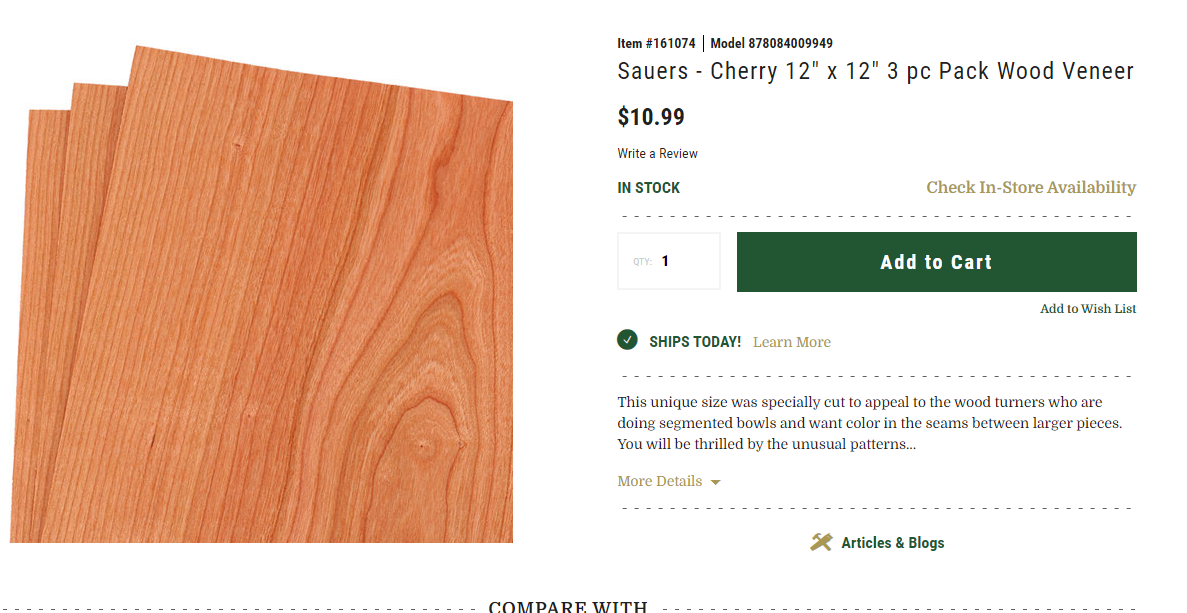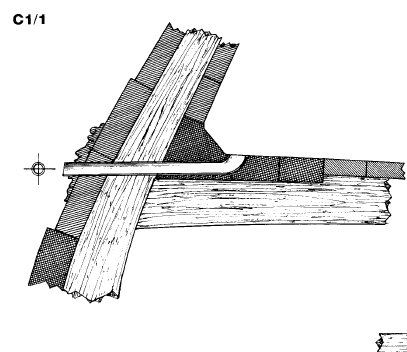-
Posts
3,135 -
Joined
-
Last visited
Content Type
Profiles
Forums
Gallery
Events
Everything posted by Gregory
-
How to seize a block to an iron band
Gregory replied to Laggard's topic in Masting, rigging and sails
Laggard was looking for information to attach blocks to a mast in a model kit. I think we provided some good information. Pointing out that something is historically inaccurate without offering a good alternative doesn't really help the aspiring modeler very much, and may very well discourage them because they are intimidated by " not getting it right " according to the experts.. -
How to seize a block to an iron band
Gregory replied to Laggard's topic in Masting, rigging and sails
Are there any reliable references for longboat rigging in 1742? -
How to seize a block to an iron band
Gregory replied to Laggard's topic in Masting, rigging and sails
The builder of this contemporary 1742 model didn't get the memo..😁 -
How to seize a block to an iron band
Gregory replied to Laggard's topic in Masting, rigging and sails
Here is another nice image from the log of BobF You will be hard pressed to find any kit with detailed instructions for stropping blocks. If you search forum topics for the word " stropping " or " strop " you will find a lot of different approaches, that you will have to sort out for yourself, and find a method that suits you. Here is another example: Here are some of GlBarlow's simulated iron bands ( made with tape ) Here is some of his stropping work with hooks.. -
How to seize a block to an iron band
Gregory replied to Laggard's topic in Masting, rigging and sails
I provided this information in the post above. I also imagine you didn't look at the information I provided about the Medway long boat, as it has very detailed photos of blocks stropped with hooks. -
How to seize a block to an iron band
Gregory replied to Laggard's topic in Masting, rigging and sails
You didn't see any help in my post above? -
How to seize a block to an iron band
Gregory replied to Laggard's topic in Masting, rigging and sails
The rigging on that boat will be a lot like the Medway Longboat. In the post above Chuck explains making the bands from tape instead of metal. I make similar bands from black cardstock. If you go further in that log, you will see the blocks are stropped and hooks added. The rigging on the longboat would have been easy to break down, and the blocks would not have been permanently attached to the mast. Follow that log and you can't go wrong. If you are not comfortable making the hooks, I have found these to be pretty good, after being blackened.. Crafty Sailor Hooks Note: They come in several sizes. -
The AOTS for Bellona said she shipped out with 48 tons of coal, wood and candles.. Perhaps the Winchelsea would have had half that.. I don't think the candles would have been a big part of that..
- 1,784 replies
-
- winchelsea
- Syren Ship Model Company
-
(and 1 more)
Tagged with:
-
How to seize a block to an iron band
Gregory replied to Laggard's topic in Masting, rigging and sails
Just to make sure you are getting good info, it would help to have more information about the model and the purpose of the block. If the plans do not show how to set up the block, there may be other missing or incorrect information. -
If you Google the title, you can get it for at least half that.. Here is one at Abe Books for $95 shipped.. If you don't have to hold a book in your hand, here is a free E-book .. The Elements and Practice of Rigging And Seamanship, It is apparently in the public domain. There is also a free "Steels Art of Rigging" in the NRG resources..
- 857 replies
-
- Sphinx
- Vanguard Models
-
(and 1 more)
Tagged with:
-
Probably no more than the average storm drain around the world..😁
- 274 replies
-
- Cheerful
- Syren Ship Model Company
-
(and 1 more)
Tagged with:
-
( Alan, just saw your comments. Thanks for the additional input. ) Here is a quick quote from Lees regarding some of the belaying points in question.. Page 97 of my copy regarding topgallant bowlines and bowline bridals. After 1773 ( Melumpus ) they were still belayed to the fore top, but blocks that were used previously are omitted. So that is the change/improvement that would have been made since 1750 ( Royal Caroline ). As to the question of whether lines were belayed at the tops, this reference says they were, and there was no change in that regard between 1750 and 1785.
-
The information I provided from Petersson was an effort to answer a question. There was no claim of reliability, just a possibility. However, a reply from Delf appears to add some credibility to the information. Which I have added to my fount of knowledge.. I will look forward to your input when you return from holiday and can check your references...
-
FWIW, the wood of the model in your image is/was probably boxwood.. The color comes from 200+ years of aging.. An idea I had for covering exposed plywood edges was to use strips of veneer. Not sure what resources you have in NZ, but here in the US I would be looking in a woodworking store for something like this:
-
Here is a drawing from Anatomy of The Ship - Royal Caroline.. It might be similar, and just angled into the deck..
- 274 replies
-
- Cheerful
- Syren Ship Model Company
-
(and 1 more)
Tagged with:
About us
Modelshipworld - Advancing Ship Modeling through Research
SSL Secured
Your security is important for us so this Website is SSL-Secured
NRG Mailing Address
Nautical Research Guild
237 South Lincoln Street
Westmont IL, 60559-1917
Model Ship World ® and the MSW logo are Registered Trademarks, and belong to the Nautical Research Guild (United States Patent and Trademark Office: No. 6,929,264 & No. 6,929,274, registered Dec. 20, 2022)
Helpful Links
About the NRG
If you enjoy building ship models that are historically accurate as well as beautiful, then The Nautical Research Guild (NRG) is just right for you.
The Guild is a non-profit educational organization whose mission is to “Advance Ship Modeling Through Research”. We provide support to our members in their efforts to raise the quality of their model ships.
The Nautical Research Guild has published our world-renowned quarterly magazine, The Nautical Research Journal, since 1955. The pages of the Journal are full of articles by accomplished ship modelers who show you how they create those exquisite details on their models, and by maritime historians who show you the correct details to build. The Journal is available in both print and digital editions. Go to the NRG web site (www.thenrg.org) to download a complimentary digital copy of the Journal. The NRG also publishes plan sets, books and compilations of back issues of the Journal and the former Ships in Scale and Model Ship Builder magazines.

